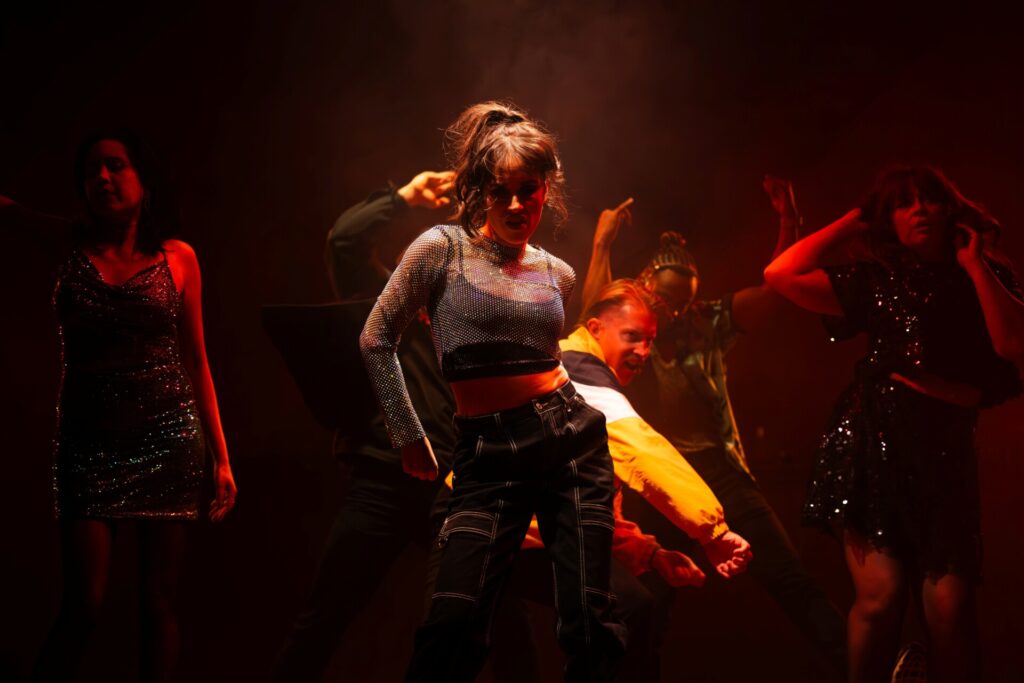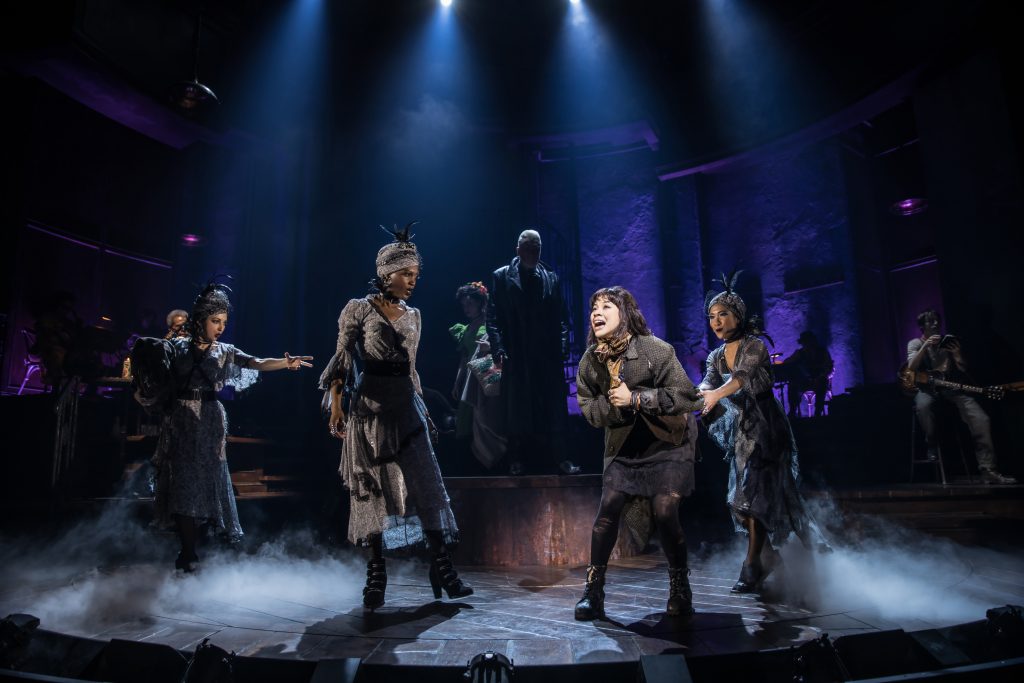
‘In The Club’ // Bullet Heart Club and Theatre Works
‘In The Club’ was poetic.
Bullet Heart Club and Theatre Works mostly hit the mark in this Naarm (Melbourne) premiere of decorated playwright Patricia Cornelius’ ‘In The Club’. The play high-tackles themes of gendered, sexual violence during the separate, concurrent narratives of three women’s encounters with members of an AFL team on a night out. Riveting performances of songs from Jaguar Jonze’s album ‘Bunny Mode’, superbly choreographed by Mia Tuco are incorporated into the taut, poetic language of the original script.
Commissioned and first presented by the State Theatre Company of South Australia as part of the 2018 Adelaide Festival, ‘In the Club’ received superb reviews everywhere from the Guardian to the Australian. It was the height of the Me Too movement. The Advertiser noted the “litany of real-world incidents which spring to mind as you reflect on the performance.” Five years later, Cornelius’ Writer’s Note reflects that “The behaviour of young sportsmen … remains unaddressed as does the abusive behaviour of many Australian men.”
As the name of the play would suggest, highly danceable remixes fill the dark of the Theatre Works auditorium as the audience files past an almost undressed stage. Two long, garish, counterposing lounges in wraparound configurations sit upstage right and centre stage left. A scattering of bottles and cans decorate a ledge on the back wall of the theatre shell. Bethany J Fellows’ minimalist set design ably serves the entire course of the production, from the three monologues introducing the protagonists, through the body of the action in the eponymous club, to the inevitable denouement at an apartment owned by one of the players’ teammates.
The production is extremely polished, and makes highly coordinated use of projection, lighting effects, music and movement. Even during the opening monologues, we experience interrupting flashes of discordant lighting accompanied by sudden bodily contortions to visualise the interruption that adolescence, and the strictures of gender, has brought to each protagonist’s sense of self.
Annie, played by Eva Seymour, grows up identifying with the sport, the team and the players themselves, some of whom visit her school when she is sixteen. To Annie’s disgust, the flirting of her peers attracts the attention of the players, while her attempts to connect as a fellow footballer fail. Her awkward approach to her idol, Sean, ultimately results in her visiting him at a share-house, where he perfunctorily invites her into his bed. As Seymour lies centre stage on the floor, we see her upper body projected onto the back wall, her head cut off – she becomes literally faceless.
In contrast, Brigid Gallacher’s character Olivia is oblivious to football. Growing up, she is indifferent and even scared of men. She describes her two, unsatisfying relationships to date, and how despite this, she longs for meaningful connection, including satisfying and intimate sex.
Ruby’s monologue is delivered by Michelle Perera in the strongest performance of the three. Shortly in, the character begins firing off a list of instructions in the seduction of men. The presence of friends and family members on opening night may have contributed to moments of inadvertent laughter during the first two monologues, where comedy sat awkwardly with the subject matter and undermined the emotional stakes for these characters. Perera resists the temptation to play Ruby for laughs, giving dignity and seriousness to her character, who claims a sexuality fully and satisfyingly integrated into their personality. Ruby uses men for sexual gratification as much as they use Ruby.
Seymour’s greater strength as a singer becomes clear in the first song, which transits us to the present day and introduces Damien Harrison, Darcy Kent and Ras-Samuel (later James, Angus and Sean, respectively) in their secondary role as a generic chorus of football players. Interchangeable and performatively masculine, Harrison, Kent and Ras-Samuel fluidly morph in between scenes from that singular entity – the boys – who move as one, prowling and strutting around the women – back into their individual roles as the individual antagonists of the women.
Nikias Pajanti and Tom Willis’ lighting design deserves a special mention, in particular the use of tight, hard edges to frame the action of a scene or create spaces and depth, while the other performers linger in the background darkness, perfectly conjuring the charged atmosphere of a boozy club.
James, the aging footy star, pursues Ruby, who has slept with him but isn’t interested in a relationship. Annie is broken, unwanted, and persistently trying to speak to Sean, and being told to get lost by him and his entourage. The heart of the play is the nascent possibility of a relationship between young recruit Angus and Annie, who has to literally hand-hold him through his clumsy attempt to start a conversation with her. The warmth and humour of the scene they have as they leave the club together at the end of the night is a highlight.
However, this is clearly not a comedy – Ruby and James are not going to end up together, and nor are Sean and Annie. The lack of closure of some characters’ narrative arcs reflects perhaps just that – that women do not get closure in the real world from the sexual violence inflicted by men.
The toxicity of the deforming and amplifying effect professional sport has on the men who play it is a difficult topic to handle without heavy-handedness but is done effectively in this production. There was a missed opportunity to foreshadow the ending of the play by injecting more menace into the performance of the male chorus, and the character of Jack. We know that there is going to be a bad ending, even without the content warnings accompanying the promotion of this play, but the performance of the climax of the play seems more suddenly brutal than the rest of the direction.
‘In The Club’ performs until Saturday, 11 November 2023 at Theatre Works. For more information visit their website.
Photos by James Reiser






